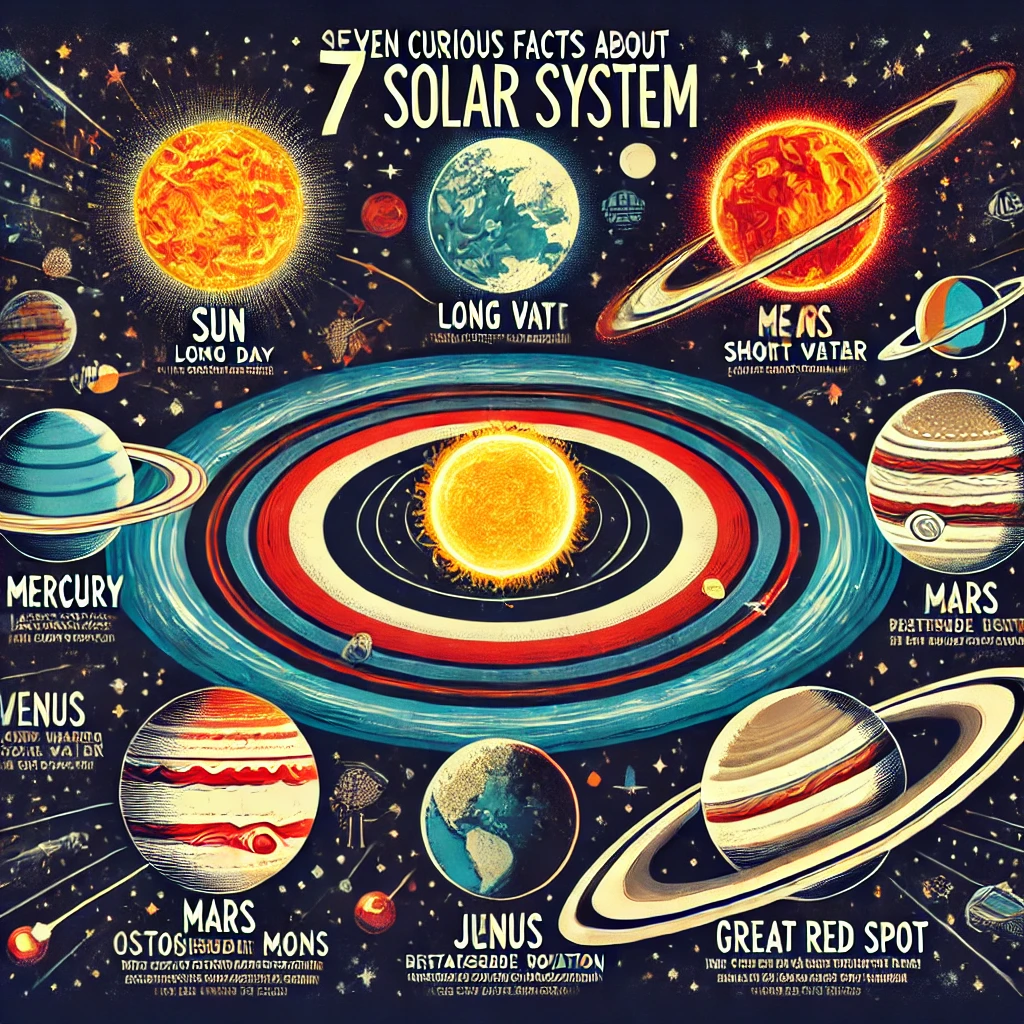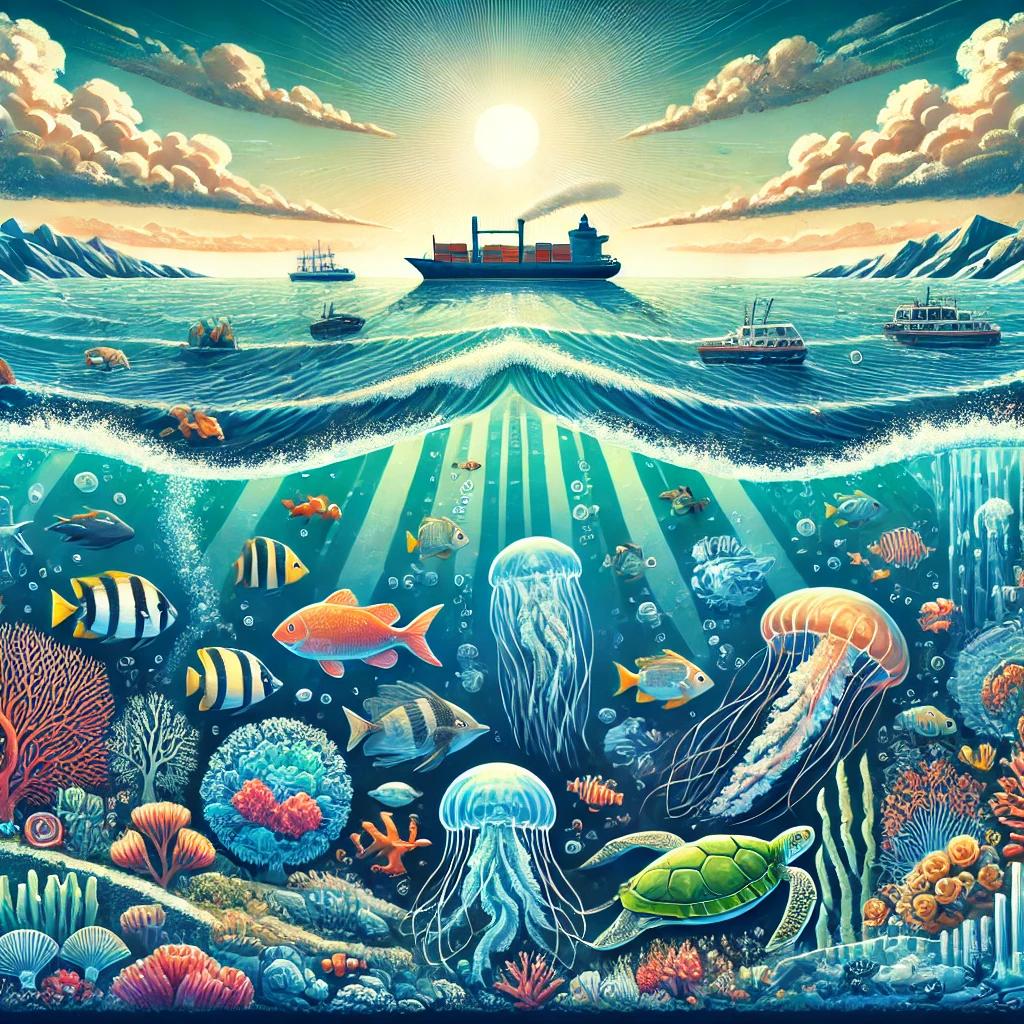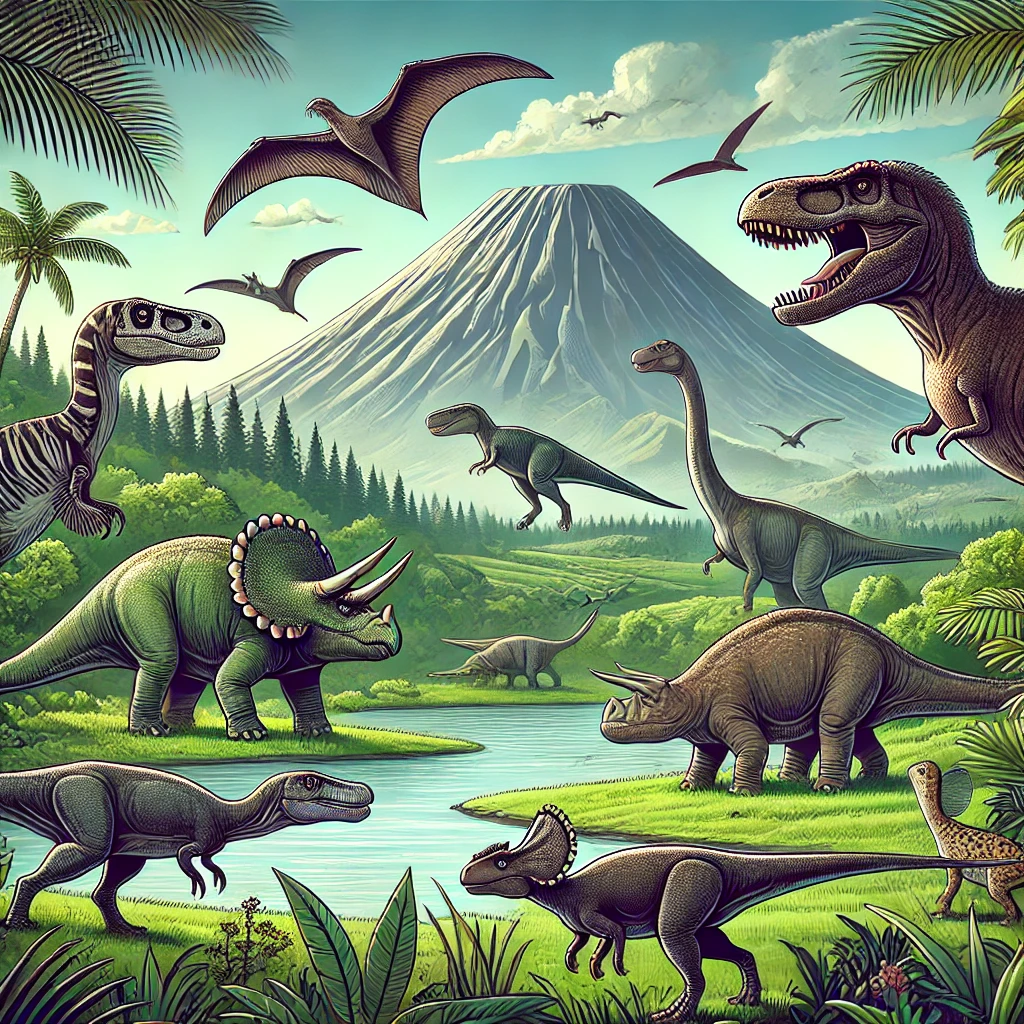7 Curious Facts About the Solar System
1. Sun’s Size
The Sun is by far the largest object in our solar system, making up about 99.86% of its total mass. This immense mass creates a powerful gravitational pull that holds the entire solar system together. The Sun’s mass is approximately 330,000 times that of Earth, and its volume could encompass about 1.3 million Earths. The Sun’s gravitational force is the reason why the planets, comets, and other celestial bodies orbit it.
2. Planetary Orbits
All the planets in the solar system orbit the Sun in the same direction: counterclockwise when viewed from above the Sun’s north pole. This common direction of orbit is a result of the solar system’s formation from a rotating disk of gas and dust. The conservation of angular momentum caused this initial rotation to be preserved as the planets formed and continued to revolve around the Sun.
3. Mercury’s Day
A day on Mercury, which is one full rotation on its axis, lasts about 59 Earth days. However, a year on Mercury, or one full orbit around the Sun, takes only about 88 Earth days. This means that a single day on Mercury is more than half as long as its year. Mercury’s slow rotation relative to its orbit results in extreme temperature variations, with daytime temperatures reaching up to 800°F (427°C) and nighttime temperatures dropping to -290°F (-179°C).
4. Venus’ Rotation
Venus has a retrograde rotation, meaning it rotates in the opposite direction to most other planets in the solar system. While Earth and most other planets rotate counterclockwise, Venus rotates clockwise when viewed from above its north pole. This means that on Venus, the Sun rises in the west and sets in the east. A day on Venus (one full rotation) takes about 243 Earth days, and interestingly, this is longer than its year, which takes about 225 Earth days.
5. Earth’s Water
Earth is the only known planet with liquid water on its surface, a key factor that makes it hospitable to life as we know it. Approximately 71% of Earth’s surface is covered by water, mostly in the form of oceans. Liquid water is essential for all known forms of life, providing a medium for chemical reactions and a habitat for a wide variety of organisms. The presence of water has played a critical role in Earth’s climate, geology, and the development of life.
6. Mars’ Olympus Mons
Olympus Mons on Mars is the tallest volcano and the largest shield volcano in the solar system. Standing about 13.6 miles (22 kilometers) high, it is nearly three times the height of Mount Everest. Olympus Mons is also incredibly wide, with a diameter of about 370 miles (600 kilometers). This massive volcano formed from repeated lava flows over millions of years, and its size suggests that Mars has a relatively low level of tectonic activity, allowing such a large structure to remain stable.
7. Jupiter’s Great Red Spot
Jupiter’s Great Red Spot is a gigantic storm that has been observed for at least 350 years. It is a high-pressure region in Jupiter’s atmosphere, creating an anticyclonic storm system. The Great Red Spot is about twice the size of Earth, with wind speeds reaching up to 400 miles per hour (644 kilometers per hour). The storm’s reddish color is thought to be due to the complex organic molecules, red phosphorus, or other chemical compounds in Jupiter’s atmosphere. Despite its longevity, the Great Red Spot has been shrinking in recent years, and its future remains uncertain.
These seven facts highlight the fascinating diversity and complexity of our solar system, showcasing its wonders and the unique characteristics of its celestial bodies.




